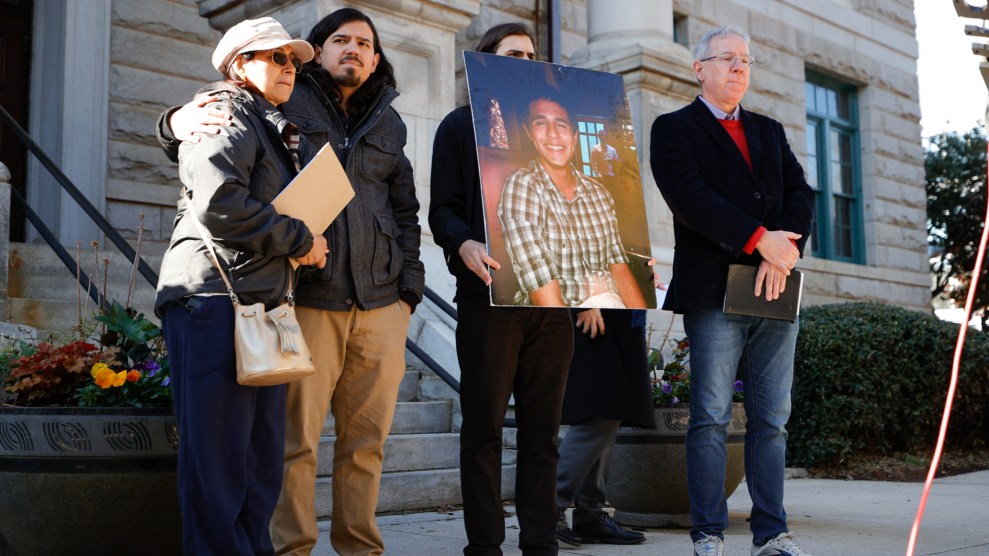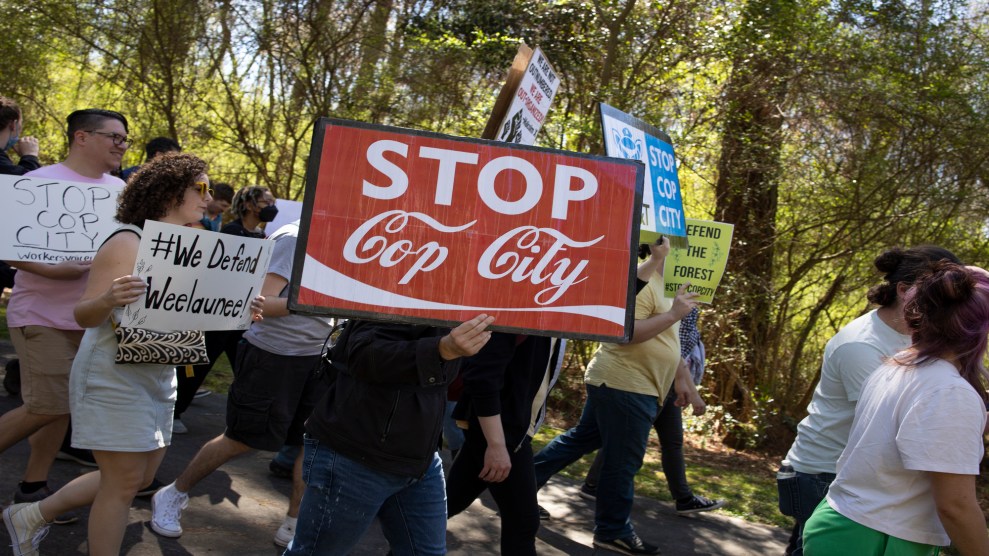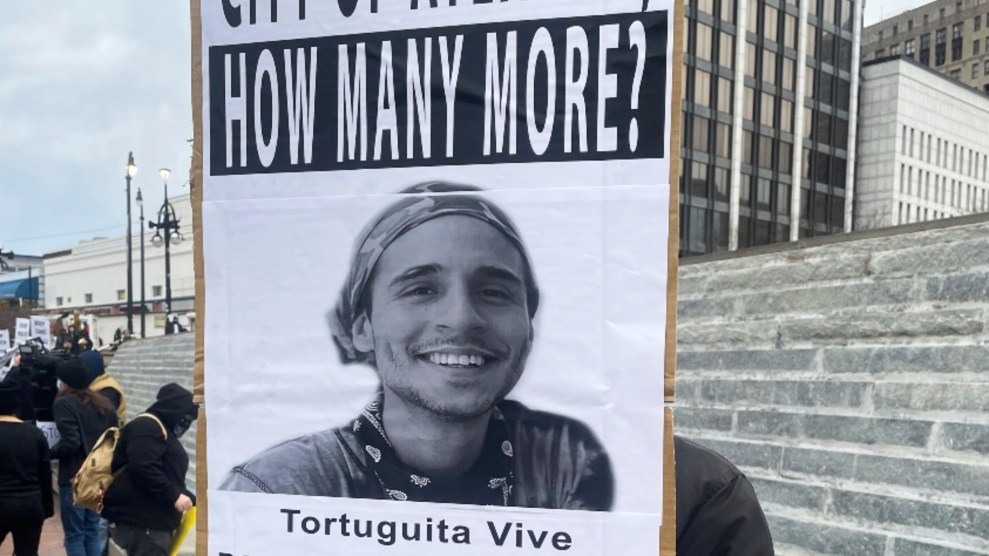
Members of Manuel Esteban Paez Terán's family stand during a news conference in Decatur, Ga. Alex Slitz/AP
On Wednesday the DeKalb County Medical examiner released the autopsy results for Manuel Paez Terán, the 26-year-old protester who was killed by a Georgia state trooper during a January 18 raid of campsites set up to stop the construction of the Atlanta Public Safety Training Center often dubbed “Cop City.”
The autopsy revealed, according to reporting from Fox 5 Atlanta, that Terán suffered at least 57 gunshot wounds and did not have gunpowder residue on their hands. This calls into question the cops’ initial explanation, that Terán shot first. For forensic scientists, gunpowder residue on a person’s hands indicates that the person “recently discharged a firearm, handled a firearm or an object with gunshot residue on its surface, or was in close proximity to a firearm when it was discharged.”
The PSTC is a $90 million police center that authorities hope to build on nearly 100 acres of city-owned land in an unincorporated section of DeKalb County. Activists hope to stop the complex, which would include a “mock city for real-world training,” complete with a “faux nightclub and convenience store.” But they’ve been met with massive resistance. On the day of Terán’s death, seven other activists were charged with domestic terrorism. Now, upwards of 40 people affiliated with the Stop Cop City movement have been charged with domestic terrorism in what legal observers have called a “judicial pogrom” against opponents of Cop City.)
Terán’s family was critical of the length of time it took authorities to release the autopsy. They released the results of their own independent autopsy that stated Terán was shot and killed as they sat cross-legged with their hands up in the air. The DeKalb County autopsy neither refutes or confirms this, stating that “there are too many variables with respect to movement of the decedent and the shooters to draw definitive conclusions concerning Mr. Terán’s body position.” According to the Georgia Bureau of Investigation, none of the officers involved were wearing body cameras.
As I wrote in February, Terán’s death is the first known example of someone killed by law enforcement while engaged in environmental “land defense” activism. Yesterday, the Atlanta Community Press Collective wrote on Twitter: “Activists have long maintained that the State’s claim Tort fired first was a lie, and this autopsy supports activist claims.”
















